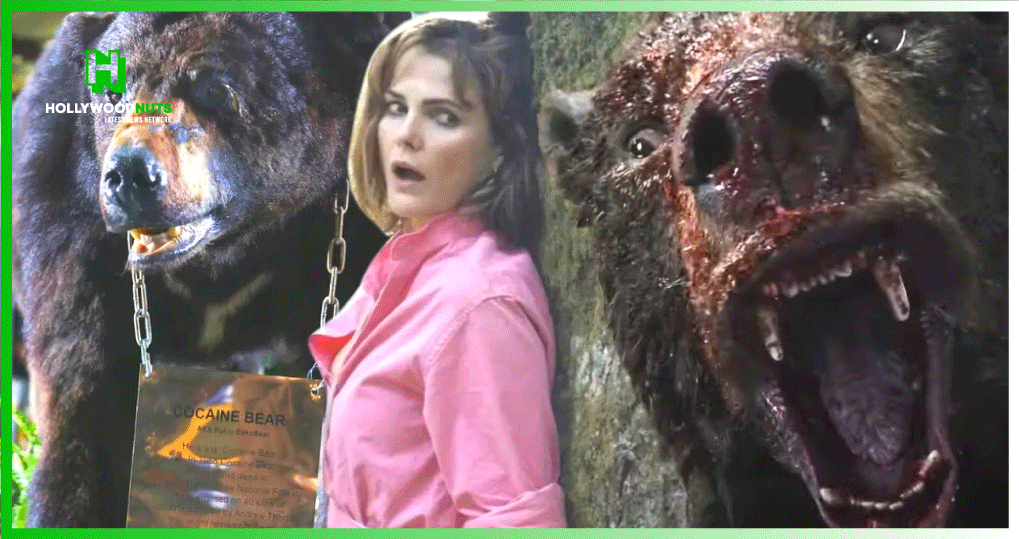Cocaine Bear Is A Actual Film – And Its Basis On A True Story
Cocaine Bear is a real movie, and as much like an April Fools’ Day prank as its premise seems — that a bear eats cocaine and goes on a rampage — Cocaine Bear is based on a true story. Elizabeth Banks’ latest project Cocaine Bear is literally a movie about a bear ingesting 75 pounds of cocaine. The estimated value of the cocaine the bear eats in Cocaine Bear is around $15 million (if the Cocaine Bear movie follows the true story), so a hunt for the missing drugs obviously ensued before the bear was discovered. Judging by the Cocaine Bear trailer, this is when the titular cocaine bear — dubbed Pablo Escobear when the media broke the Cocaine Bear true story in 1985 — starts causing mayhem.
The plot appears absurd, but in a way that suggests it will already be a runaway hit when the Cocaine Bear release date of February 24, 2023, arrives. Even though it seems absurd to think of a bear ingesting cocaine, it has actually happened. In 1985, events in the real-life Cocaine Bear occurred in Georgia and Kentucky. A failed attempt to airdrop a shipment of cocaine from a small plane over Georgia’s Chattahoochee National Forest was made by a drug smuggler. The real-life bear that ate cocaine didn’t quite go on the blood-fueled rampage that Elizabeth Banks’ Cocaine Bear movie portrays, but he never lived to retrieve the package. Here is the surprisingly gloomy real-life background to Cocaine Bear.
The Cocaine Bear Is Real
Cocaine Bear is a real movie based on actual events, and many are rightly wondering how and why a bear ate cocaine. It all happened because of drug smuggler Andrew Carter Thornton. Thornton did not always have a career as a drug smuggler. He was once a narcotics officer on the Lexington, Kentucky police force during the height of the War On Drugs. He resigned to practice law in 1977, but eventually wound up working on the other side of the narcotics trade. By 1980, a federal indictment alleged he was a member of a smuggling ring involving other police officers. He was arrested and charged multiple times for smuggling drugs and weapons and attempting to steal weapons from a naval base. Unfortunately for the bear from Cocaine Bear (and its victims), that was not the end of his smuggling career.
As is always the case for the inspiration of a crime thriller, something went wrong. The Snakes on a Plane-like story behind Cocaine Bear played out because of an idea so obviously doomed to failure that even the injury-hungry Jackass crew wouldn’t attempt it. Thornton planned a daring drug smuggling operation in which he would fly over the Chattahoochee National Forest in Georgia, throw duffel bags of cocaine into the forest below, and then parachute down himself. However, his parachute did not open. His body was found in a driveway in Tennessee, still carrying 77 pounds of cocaine. Authorities then started to find cocaine dropped in the forest, but the last duffel bag eluded them for two months. As it turned out, a black bear found it first. What would be discovered next would go on to have near urban-legend status, and would inspire Charlie’s Angels 2019 reboot director Elizabeth Banks to make the Cocaine Bear movie.
The Real Bear Who Ate Cocaine Didn’t Kill Anyone
Police discovered the bear who consumed cocaine along with the remainder of Andrew Carter Thornton’s cargo. When the authorities located the final cocaine bag, they discovered it to be empty and missing the 75 pounds of cocaine valued at $15 million that were supposed to be inside. They discovered a dead bear that had overdosed on cocaine at the same location. Following the Colombian drug lord Pablo Escobar, this tale quickly earned the bear the moniker “Cocaine Bear” and “Pablo Escobear.” But additional research uncovered another puzzle.
The black bear died of a long list of causes associated with a fatal drug overdose of the kind Uma Thurman’s Mia narrowly avoided in Pulp Fiction: cerebral hemorrhage, respiratory failure, heart failure, stroke, hyperthermia, and renal failure, among other symptoms. The real-life bear from Cocaine Bear had a stomach completely full of cocaine. No living being was made to consume that much cocaine at one time. However, the autopsy revealed that the bear only had four grams of cocaine in its blood. It could not possibly consume all 75 pounds, especially when even a small portion of a pound could cause its catastrophic organ failure. Millions of dollars of cocaine had was still missing.
The bear that served as the model for Cocaine Bear, however, was stuffed because the cocaine overdose reportedly left its remains in decent shape. The genuine Cocaine Bear currently inhabits in Kentucky, despite the fact that the Cocaine Bear movie is set in Georgia (a state where Deliverance was filmed). It is currently a popular Lexington tourist destination. There is still an exhibit of Pablo Escobear there, coupled with a message about the perils of drugs and the black market for drugs.
The Cocaine Bear Movie Won’t Be 100% Accurate
Cocaine Bear is inspired by a true story, but it isn’t a Pablo Escobear biopic. It was never intended to be a movie about what really happened when a bear ate cocaine. Director Elizabeth Banks is an accomplished actress and producer, and has starred in many incredibly subversive dark comedies like Slither, and more outright thrillers like Brightburn and The Uninvited. While there’s no doubt she could do a heartfelt drama about the dangers of the illegal narcotics trade, or the impact of human activity on wildlife, the chances she was going to were always slim. Cocaine Bear promises to be similar in tone to James Gunn’s Slither in that it promises plenty of gore, action, and tension, but all served with a great sense of humor and subtle social commentary.
The movie Cocaine Bear is largely about a bear who eats cocaine, goes on a rampage, and kills a lot of people. However, there may be some darker undertones concerning nature and wildlife in the film. Beyond the setting and circumstances, Cocaine Bear will be a far from realistic depiction of what actually happened to the real bear who ate cocaine. The Cocaine Bear teaser has already established that the film is absolutely as bizarre and absurd as the premise promises.
What Happened To The Cocaine Pablo Escobear Didn’t Eat?
The real cocaine bear ranks among the strangest inspirations for a movie, and is more like Samuel L Jackson’s Snakes on a Plane than real life should ever be. It’s no surprise that the true Cocaine Bear story is still partly unsolved. The remaining cocaine vanished, leading many people to pin the entire crime on the unfortunate Pablo Escobear. On top of his overdose, he bears undeserved blame for the disappearance of millions of dollars in drugs. Since he consumed less than a pound, over 74 pounds were unaccounted for. Since authorities only found one bear who had reached its cocaine limit, a less furry culprit had to be responsible.
Perhaps one of Thornton’s partners—a Jesse to his Walt, to use a Breaking Bad analogy—came back to look for it. Or then, a hiker might have unintentionally discovered the priceless item in the forest. However, the narcotics enforcement officer involved in the case conjectured that the absence was more likely to be natural. The cocaine’s packages were still there, suggesting that during the two-month search, the drugs may have been dispersed throughout the forest and dissolved in snowfalls.
The inspiration for the titular Cocaine Bear and the missing cocaine aren’t the only true story of strange rural disappearances. However, the real incident is so bizarre that it still fascinates tourists, and, when the 24th February 2023 Cocaine Bear release date rolls around, it will delight moviegoers too. Elizabeth Banks’ movie may attempt to fill in the blanks of what happened to the rest of the cocaine, though Banks’ story may center more on a conflict with a heavily drugged bear than the real story likely did. The real bear from Cocaine Bear probably would have been able to do much before succumbing to overdose.

